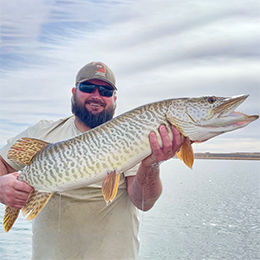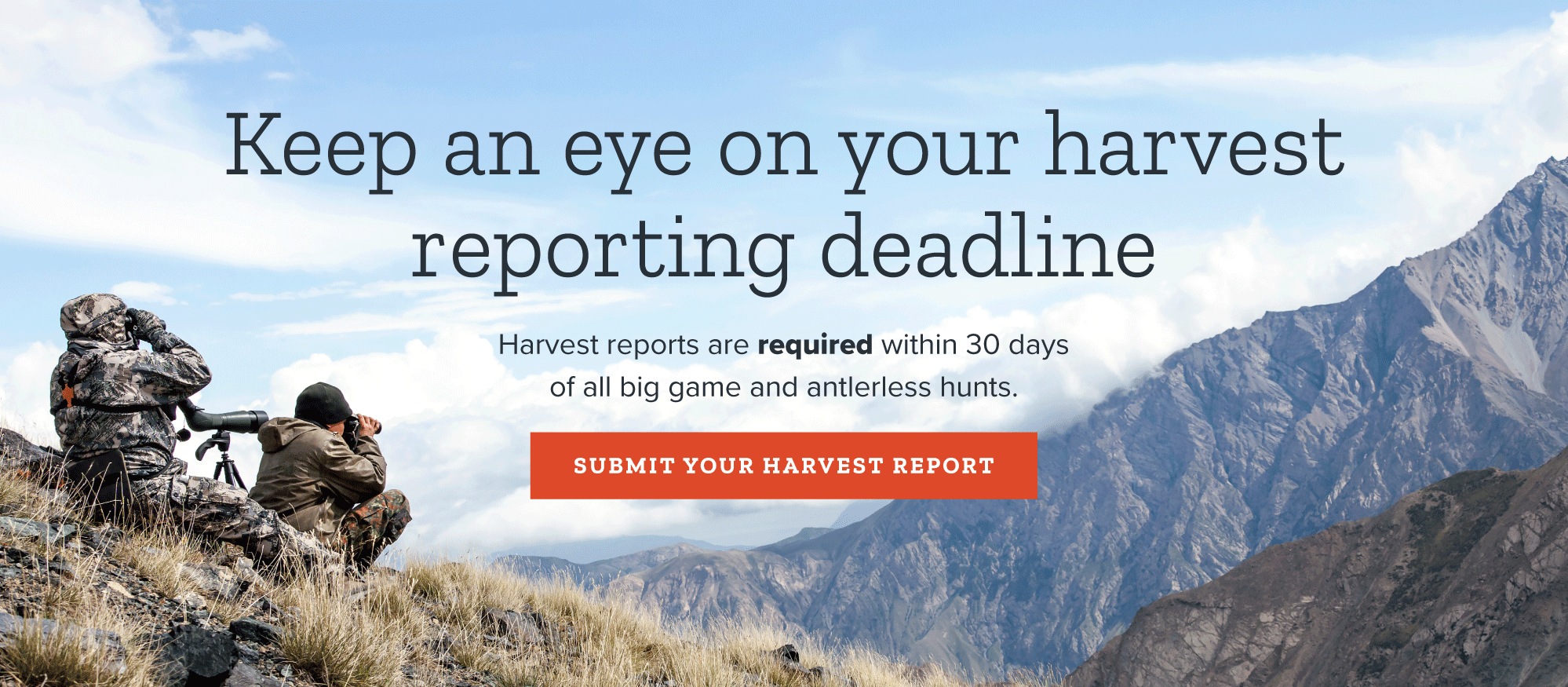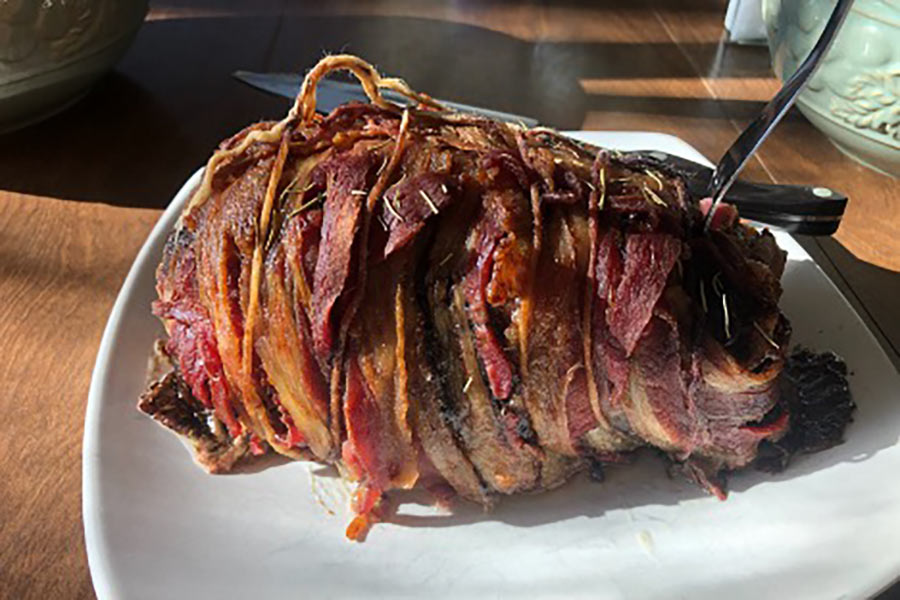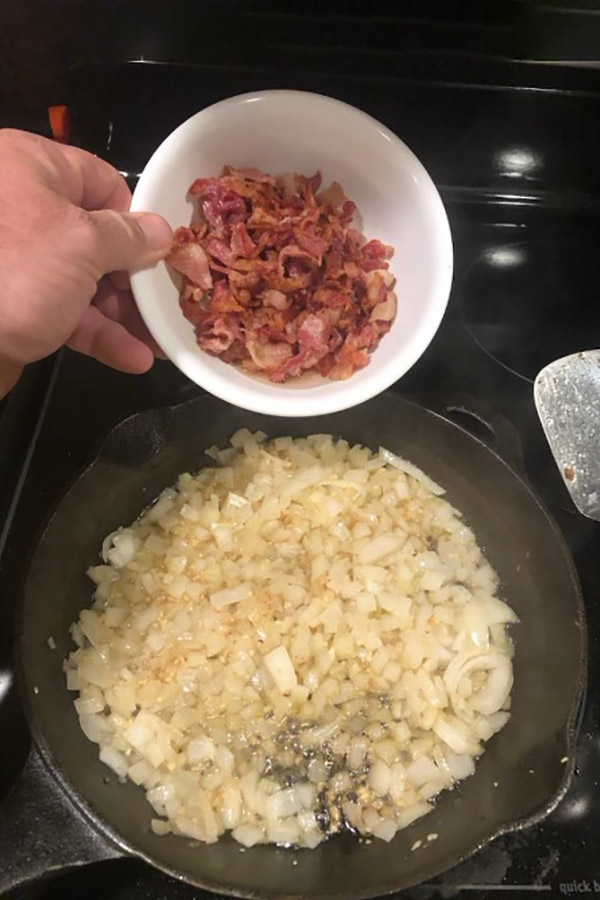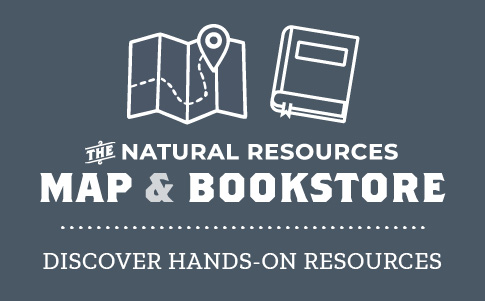Stuffed, bacon-wrapped deer or elk tenderloin
Making a special cut even more delicious with seasoned cheese and bacon
By Shay Farnsworth
Depredation Specialist
Northeastern Region
The tenderloin: It's one of the most delicious cuts of big game and is one that can also be very difficult to cook well. It can go from perfectly tender and flavorful to dry, chewy and gray in an instant. As any hunter knows, it's a darn shame when that happens to such a beautiful piece of meat.
DWR Depredation Specialist Shay Farnsworth shared one of his favorite recipes for tenderloin, which he prepares with either elk or deer. The combination of stuffing the loin with cream cheese — and wrapping it in bacon — adds layers of flavor to the roast and keeps it from drying out while roasting. It's also pretty tasty. Enjoy!
Bacon-wrapped elk tenderloin
Servings: 6–10
Ingredients
- 1 elk or deer tenderloin (approximately 6-pound roast)
- 2 pounds bacon (divided use)
- 2 medium yellow onions, chopped
- 2 heaping tablespoons fresh garlic, minced
- 1 8-ounce block cream cheese, softened to room temperature
- 1 tablespoon fresh or dried rosemary
Directions
Place an oven rack in the lower third of the oven. Preheat the oven to 325 degrees.
Step 1
Chop one pound of the bacon into ½ inch pieces. In a heavy skillet over medium heat, cook the bacon until it is just starting to get crispy and most of the fat is rendered. Remove the bacon with a slotted spoon and set aside.
Step 2
Lower the heat under the skillet to medium-low. Using the remaining bacon fat drippings, sauté the chopped onion until it's just translucent. Add the chopped garlic to the onion. Continue to cook, stirring frequently, until the garlic is soft, fragrant and golden. Remove skillet from heat and set aside to slightly cool at room temperature.
Step 3
Using a very sharp knife, butterfly the tenderloin long-ways (without cutting through entirely) so that the meat is as close to even thickness as possible, about ¾ to 1 inch thick. Sprinkle the internal surface of the cut generously with salt and pepper.
Step 4
In a mixing bowl, use a fork or electric mixer to mash together the softened cream cheese and onion/garlic mixture. Stir or blend until smooth and evenly combined.
Step 5
Smear the cream cheese mixture evenly over the cut side (inside) of the butterflied tenderloin. Spread the cooked bacon evenly over the surface of the cheese, pressing down on it lightly with your palms to adhere it to the cheese. (This will make it easier to roll without the bacon falling out.)
Step 6
Starting on the more ragged-looking of the long ends, roll the tenderloin tightly until fully closed. Starting at the middle and working out to the ends, wrap the remaining one pound of sliced, uncooked bacon crosswise around the tenderloin. It may help to temporarily secure the tenderloin closed with toothpicks or skewers as you go. Use kitchen twine to tie up the roast and keep the bacon from slipping.
Step 7
Place the tenderloin in a roasting pan fitted with a roasting rack. Cooking time will vary between 1–2 hours, depending on the size of your roast and desired doneness. Make sure that the end of your meat thermometer is inserted into the center of the roasted meat, not in the cheese layer, when you are testing for temperature.
Step 8
For medium-rare tenderloin, remove the roast from the oven at 130–134 degrees. Tent loosely with foil, and allow it to rest for 5–10 minutes before slicing the roast into crosswise rounds. Garnish with rosemary.
